Age of Mythology Showcase: Zeus
We kick off our monthly Age of Mythology coverage with a detailed look at the Greek god Zeus and his army.
The chance to play a god or, rather, multiple gods, is just one of the many enticing new features slated for Age of Mythology, Ensemble Studios' upcoming real-time strategy game. More than a sequel, and instead an evolutionary continuation of the Age series, it promises the same familiar style of gameplay but with oodles of new content and original design. To be honest, you don't actually play a god, but with the armies of mythological units under your command and earth-shattering god powers at your disposal, it sure feels like it.
Over the course of the next six months, GameSpot will be bringing you detailed showcases of the game's nine civilizations. The game's nine factions are split amongst three cultures: the Greeks, Egyptians, and Norse, three ancient civilizations rich in history and mythology and instantly recognizable to most gamers in America and Europe.
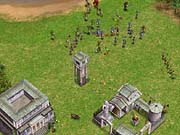
As a game based on mythology, Age of Mythology revolves around the concept of worshipping ancient gods. Each of the three cultures in the game has three primary deities available for worship. In the Greek culture, the three gods are Zeus, king of the gods, and his two brothers: Poseidon, god of the sea and cavalry, and Hades, god of the underworld. The three primary Egyptian gods are Ra, god of the sun; Isis, goddess of queens and magic; and Set, god of evil. Finally, the three Norse gods are Odin, ruler of the gods; his son, Thor, god of thunder; and Loki, the ultimate trickster god. At the outset of Age of Mythology, you must choose one of these nine gods to worship. The rest of your choices throughout the game are then informed by that choice--the units you can build, the myth creatures you can summon, and the technologies you can research.
Of course, Age of Mythology isn't a game of monotheism, in which you worship one god alone; instead, your religion is a polytheistic one, and you get to worship a small pantheon of gods. As with everything else in the game, your choice of gods depends on your primary god. So the host of gods you worship as a follower of Thor is very different from the one you worship as a follower of Zeus. In fact, even within a culture, your choice of gods is different: Hades' array of minor deities is different from that of his brother Poseidon. In total, there are 36 minor gods, but you can choose only three to worship. Thus, the variety of options available to you, even within a given culture or faction, is greater than it ever was in Age of Empires II.
In this showcase, as we will do in each, we'll explore a primary god and the available minor gods who accompany them. We'll also take a look at the various units endemic to a culture, as well as the myth creatures, god powers, and myth technologies offered by each god. Our first showcase will center on the king of the Greek gods, Zeus. Of all the gods in Age of Mythology, he is perhaps the most famous.
Before we get started with the Zeus faction, though, we need to explain some new design elements in Age of Mythology. We recently had the chance to play a few games of AOM and found that many significant changes have been made since Age of Kings.
Gameplay
The first bit of good news is that you no longer have to worry about farms. Age II tried to fake it by letting you queue up farms at the granary, but Age of Mythology finally and thankfully does away with all that nonsense. As soon as you build a farm, it stays there forever. It never runs out, and you never have to replant it. To make up for the welcome change, farms will be more expensive (think 100 wood) and also have fewer hit points, meaning they'll burn more easily during town invasions.
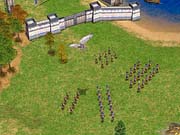
The population cap is still there, but a new feature that can boost your final count of units is the introduction of settlements. Each map will now have a handful of settlements randomly located at the start of the game. Settlements are nothing more than small town centers, raw and primitive, simulating neutral villages on the map. You can set the number at the game setup screen, but in our four games, the number was always five. Although our default pop limit was 50, we could increase that cap permanently by capturing these settlements. You simply send villagers to the settlement and tell them to build a town center over the settlement. When construction is complete, it's a new town center under your control, and your pop cap bumps up by 10. Of course, if the enemy sacks your town and destroys your new town center, the center will revert to its primitive settlement state, ready for your enemy to build a new town center on top of it. In addition, the game has one new victory condition: If you control all settlements, including your enemy's original town center location, you win the game. It's another way to quickly end the game without having to play through the droll mop-up sequence at the end. Right now, since it appears you can build town centers only during the third age, capturing settlements and boosting your pop cap seems like a later game strategy. But it adds yet another resource to fight over; we foresee lots of pitched battles back and forth over settlements, as town centers get razed and rebuilt in an effort to field ever larger armies.

Like in Age II, you advance through the ages, gaining access to new units, buildings, and technologies. However, in keeping with the mythology theme, when you advance to a new age, you are given a choice of two minor gods to worship. Each god is offered but once, so while you gain the advantages of the god you choose, you close yourself off to the other god. It provides a level of strategic choice that wasn't in Age II and adds an anxious edge to age advancement in AOM. Each god thus has six choices for minor gods but can ultimately align himself or herself with only three.
Age of Mythology has four ages--originally, Ensemble wanted to reduce the game to three ages, since it was thought that most players just bypassed the first age as quickly as possible. However, since you can choose only a minor god when you advance to a new age, you can make only two choices in a game with three ages. And as Greg Street, designer for Age of Mythology, says, "This part of the game is just too cool." So Ensemble decided to put the first age back in so that you can choose three gods instead of just two.
King of the Gods
Zeus is famous throughout mythology as a powerful but temperamental god. Street says, "Zeus is undoubtedly the most familiar god in Greek, if not all, mythology. Zeus was the king of the Greek gods and was famous for three things: leading the overthrow of the dreadful titans, who ruled before Zeus and his fellow Olympians; fathering countless progeny with dozens of mortal and immortal women, and lending aid to a multitude of Greek heroes, many of whom were already among the countless progeny. After the titans were banished, Zeus' only real challenge came from his own abused and abusive wife, the matronly Hera. Zeus' symbol was the lightning bolt, his domain was the sky, and his throne was atop Greece's Mount Olympus. He was worshipped throughout the mainland, most notably at Olympia, which still gives its name to the games originally held to honor the great Zeus."
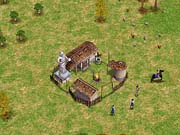
In Age of Mythology, Zeus' is a faction high in aggression and power. To understand Zeus, it is first necessary to understand the Greek culture, as represented in AOM. According to Street, "We figured for most fans that Greek mythology would be the most familiar of our pantheons, and so we endeavored to keep the Greeks reasonably familiar, while the Egyptians and Norse are a pretty big departure from Age of Kings mechanics. Greeks train their human soldiers from three different buildings (one each for infantry, archers, and cavalry), they start the game with three villagers and a scout, and they even have a fortress in the third age." However, most similarities end there. Elucidating further, Street says, "There are three major gods available in the Greek pantheon: Poseidon has a focus on cavalry and trade; Hades emphasizes archers and buildings; and Zeus, the king of the Greek gods, is all about infantry and [favor]."
Zeus' greatest strength is his heavy favor bonus. With stone gone from Age of Mythology, favor is the new fourth resource, which is used to cast god powers and buy myth units and myth technologies. Every culture generates favor differently. The Greek gods garner favor by praying at temples. Thus, they have the most control over how they gain favor, more so than the Egyptians or Norse. If Zeus players need more favor, they can simply assign more villagers to praying at the temple, something only their fellow Greek gods can do.
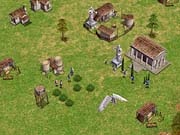
"Favor is unique as a resource in that, for eight of the civilizations, it is capped at 100--any favor generated above that limit is lost. As a result, favor tends to be spent quickly, ensuring that mythological elements are always present in any given game," says Street. Zeus' bonus, however, is that he can gain up to 200 favor, double that of any other god. In addition, according to Street, "He gathers favor more quickly and even begins the game with some small amount of favor, [whereas] other civilizations have none. This means that Zeus has no trouble sending Minotaurs, manticores, and medusae out to the battlefield."
Street goes on to explain that Zeus' favor bonus complements his strength with infantry as well. "In Age of Mythology, Zeus focuses on infantry and heroes. All of the Greek military tend to be expensive but powerful, and the infantry are no exception. With his favor bonus, Zeus' infantry also tend to be highly upgraded with mythological improvements." The Zeus player's strength with infantry cannot be overemphasized, according to Street. "The Greek armies of AOM, like those of history, are carried on the backs of their hoplites, and Zeus' hoplites are the best."
Zeus Bonuses Continued...Plus Minor Gods
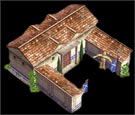
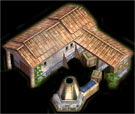

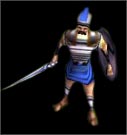
It is this strategic choice that already makes Age of Mythology so much better than Age II. Street believes that "it is the decision to worship a particular god or goddess and gain his or her benefits--while losing the potential benefits of an alternate god--that provides AOM much of its depth and replayability. Athena, for example, has improvements that benefit infantry, so she is a good choice for Zeus to select for the advance to the second age. But she is not the best choice in all situations. Often you may be making the choice between refining those strategies on which you are already focusing--in this case, infantry vs. broadening your ability to deal with other threats, such as improving your archers, cavalry, villagers, or buildings."
Zeus' Gods and Their Myth Units
Three of the minor gods Ensemble revealed to us were Athena, Apollo, and Hera, the choices for the second, third, and fourth ages, respectively.
Athena is the goddess of wisdom and war. She gave the Greeks their name for Athens, as well as many other gifts of technology and discovery, including the olive tree. Legend says that she sprang whole from the head of her father, Zeus. Athena has always been a helpful goddess, advising human heroes and bestowing on them gifts and weapons from Zeus and the other gods--for example, she gave the aegis shield to Perseus to defeat the gorgon Medusa. In fact, of the two myth technologies she offers, one of them is the aegis shield and the other is Sarissa. Street explains: "The aegis shield, which is one of Athena's common symbols, improves the pierce armor of infantry (pierce armor reduces the damage of ranged attacks, like arrows). Sarissa, named for the superpikes of the Macedonians, improves the defenses of hoplites (specifically hack armor and hit points) under the logic that a longer spear makes it harder for enemies to reach you."
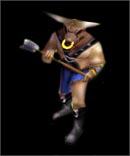
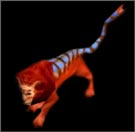
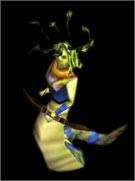
God Powers
The fun doesn't end with mythological units and technologies. Choosing a god also grants you a god power. These special one-shot powers can do a lot, but they aren't game winners by themselves. Says Street: "An important clarification on god powers: They don't win the game for you. Lightning-storming someone's town without following up the attack is as useless as sending in a force of hoplites without support or reinforcements. AOM god powers are emphatically not nukes. It's difficult for them to be, since each can be used only once and since all players have access to them. God powers are just one mop in your bucket o' tactics. They don't win the game on their own."
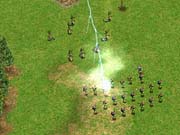
Yet, god powers are still spectacular to behold, and if they're used wisely as a complement to your overall strategy, they can give you significant advantages, despite the fact that each can be used only once. According to Street: "Think of god powers as the trump card that you hold in your hand. You can play it only once, but everyone is going to pay attention when you do. However, because they can be used only once, players can keep track of who has used which power. You can try to bluff an opponent to use a power early or save your best power until you need it most. You might even save a god power to counter someone else's god power. The play mechanic works really well. If god powers were tied to normal resources, [they] would need to be understated so that multiple uses of them wouldn't unbalance the game. And who wants understated god powers?"
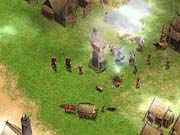
As a follower of Zeus, you automatically start with his god power: lightning bolt. It is a streak of lightning that can kill any single unit in the game, whether it's a mortal or mythological unit. However, as it can be used only once, you'll have to consider whether to save it for when the enemy sends a huge and nasty fourth-age Colossus at you or use it in a desperate attempt to kill at least one unit in a first-age rush. In the final age, Zeus' lightning theme is fully realized if he chooses Hera. Her god power is called lightning storm. Street explains: "Lightning storm, the ultimate fourth age god power granted by Hera, doesn't promise an easy kill, but it does blanket a large area, sending down dozens of lightning bolts against all the enemies in a particular area. You may kill a few or damage a lot." These are but two of the 36 god powers in the game, for each god has a unique power associated with his or her name.
That sums up this month's showcase on Age of Mythology. This is just a sampling of the many new features and great content slated for Ensemble's game. As we continue, we'll unveil more fantastic god powers, fantastic mythological units, god bonuses, and more. Return next month as we travel to the sands of Egypt and uncover the Egyptian god of the sun, Ra.
Got a news tip or want to contact us directly? Email news@gamespot.com
Join the conversation